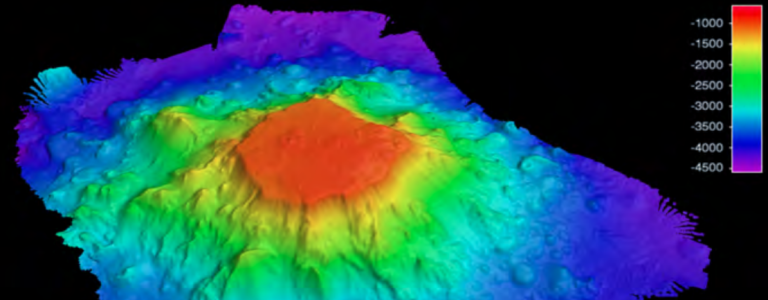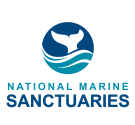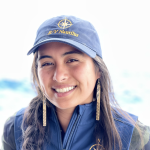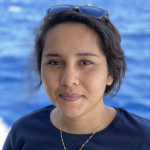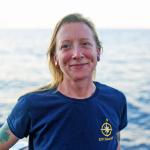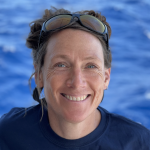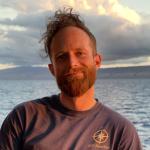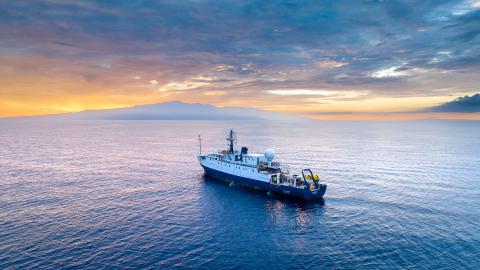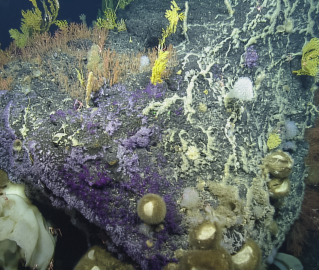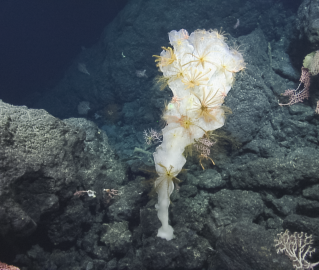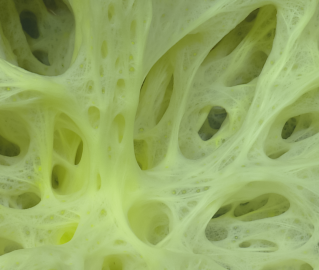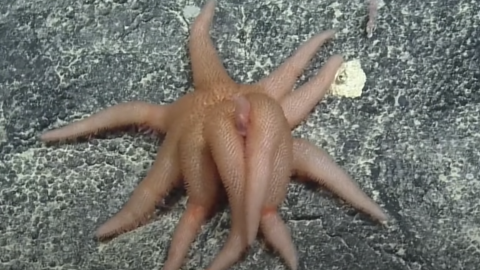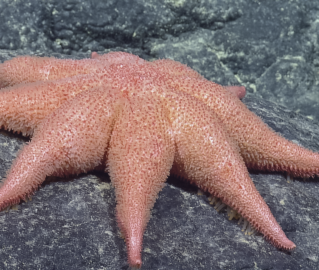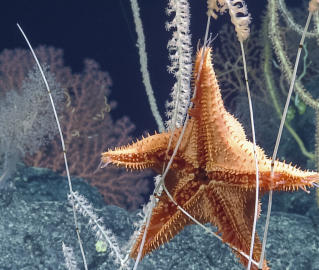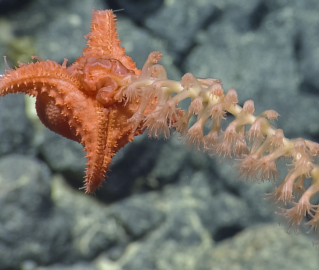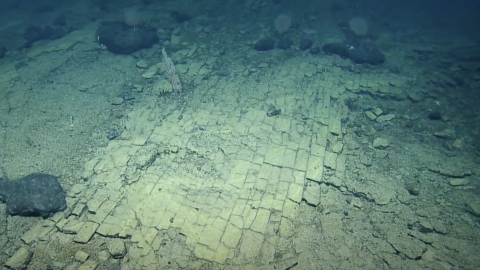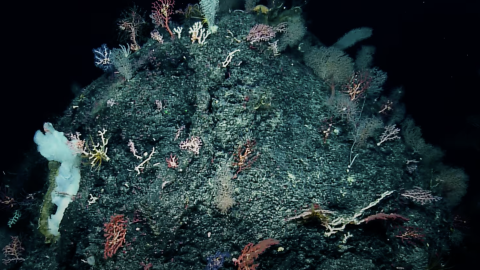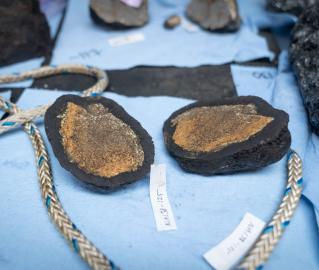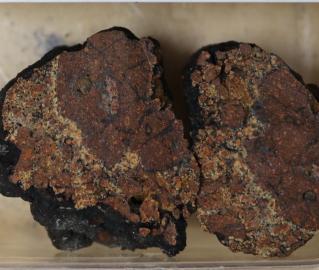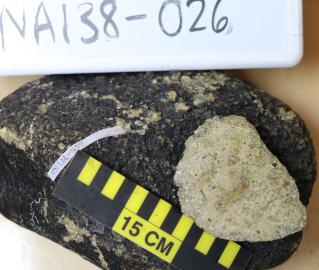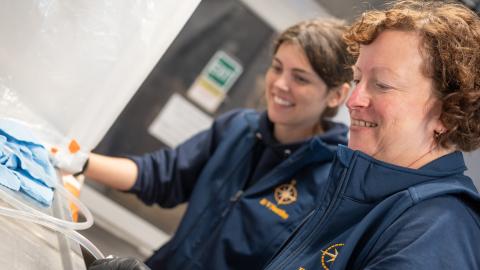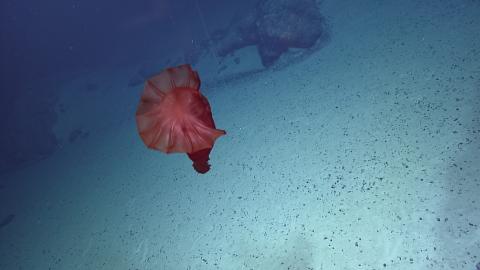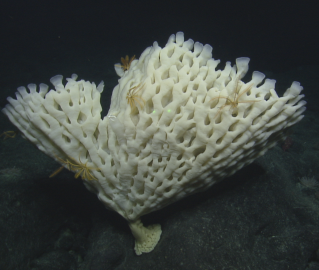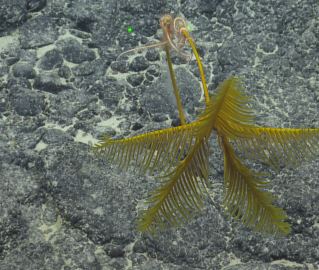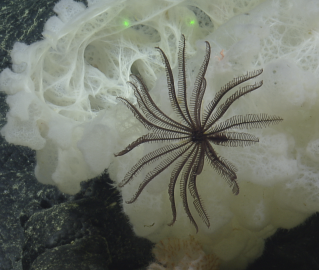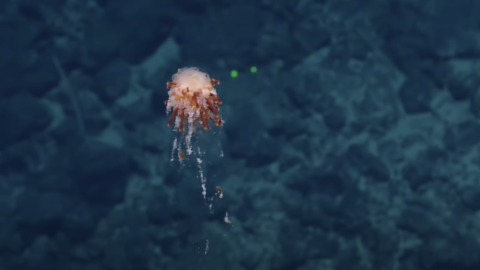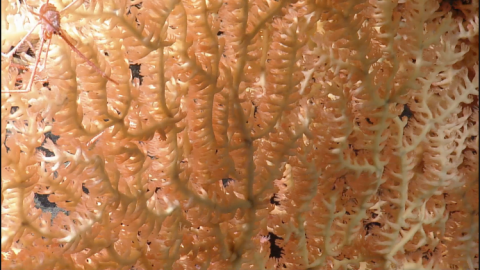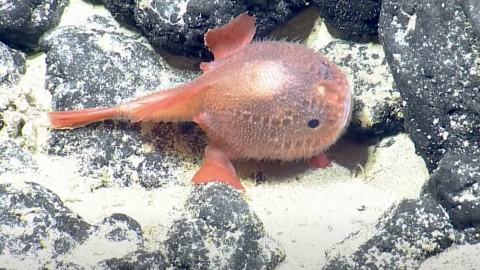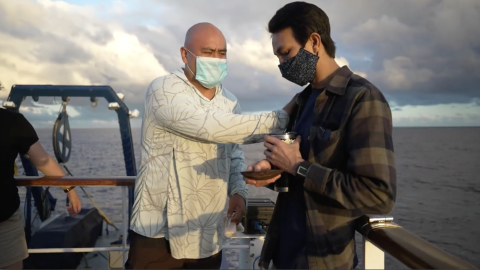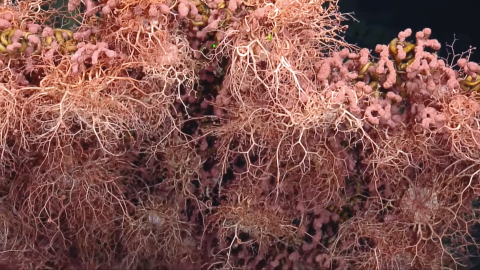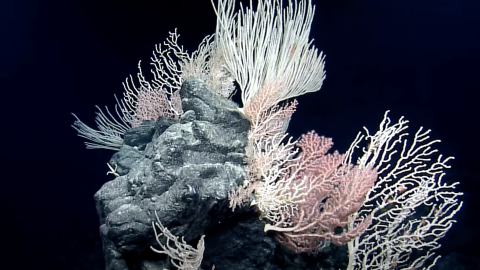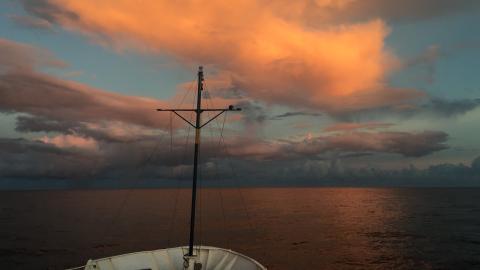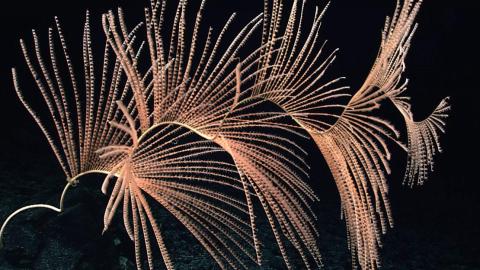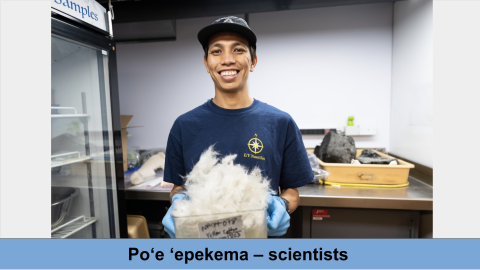This expedition will have E/V Nautilus returning to Papahānaumokuākea Marine National Monument (PMNM) to build on the accomplishments of the 2021 Luʻuaeaahikiikalipolipo expedition, which mapped the previously unmapped Liliʻuokalani Ridge Seamounts. The team returns for the first visual exploratory surveys of the seamount chain looking to investigate a puzzling split in the seamount trail. Hotspot volcano chains are generally linear features, drawing interest about what geologic processes may have split this subsea mountain group. Thousands of seamounts rise from the seafloor of the Central and Western Pacific in complex patterns where distribution and geologic origins remain to be fully understood.
The expedition name Luʻuaeaahikiikekumu (Luʻu-a-ea-a-hiki-i-ke-kumu) represents the journey to and the work in the foundation, or the foundation of the ocean/islands. The mappings of the Liliʻuokalani Seamounts in October 2021 allowed us to look at the source and foundation of our oceans and islands with ROV dives. Ke kumu refers to the foundation, the source or origin. The Ocean Exploration Trust Hawaiʻi and Papahānaumokuākea expeditions close with a return to the Liliʻuokalani Seamount thus returning to the source or beginning of your journey. This action of returning to or arriving at the source reflects an action of pani (to close). The work is complete, for now, as the kumu is also a source of inspiration for future work. The inclusion of Native Hawaiian language and practice to the Ocean Exploration Trust expeditions to Papahānaumokuākea is the first of its kind, thus the name reflects the birth of new relationships and collaborative ways of practicing that are inclusive of Kānaka (Native Hawaiians) worldview.
A primary objective of this expedition is to gather samples to determine the geologic origin and age of these seamounts as part of better understanding of the formation of the Northwestern Hawaiian Islands. These seamounts will also be surveyed for biodiversity with expectations to find rich coral and sponge communities which are commonly found on seamounts of these depths throughout PMNM. Considering the presumed Cretaceous age of the Liliʻuokalani Ridge seamounts, it is expected that relatively thick ferromanganese crusts have formed on exposed rock surfaces, particularly on the flanks of the seamounts where sedimentation is minimized. These crusts may have a high critical mineral content. The team will also study the microbial communities residing on and within these crusts that may provide important ecosystem services to seamount ecosystems, but the extent of these services is poorly known globally.
As we visit Papahānaumokuākea, the ancestral homeland of the Native Hawaiian people and the largest marine conservation area in the US, we gratefully acknowledge generations of indigenous Hawaiians and today’s stewards of these waters. OET is working closely with PMNM collaborators to inform research priorities at sea and from shore, ensure culturally-grounded collection protocols, and connect with local communities through ship-to-shore connections and development of education resources in ‘Ōlelo Hawaiʻi (Hawaiian language). All of these efforts support opportunities to work with Native Hawaiians and to perpetuate the cultural values, knowledge, and practices of their cultural heritage while advancing modern science and exploration together.
This expedition is funded by NOAA Ocean Exploration via the Ocean Exploration Cooperative Institute with additional support from the NOAA Office of National Marine Sanctuaries.
